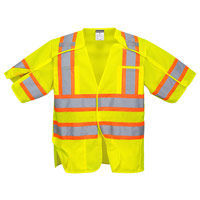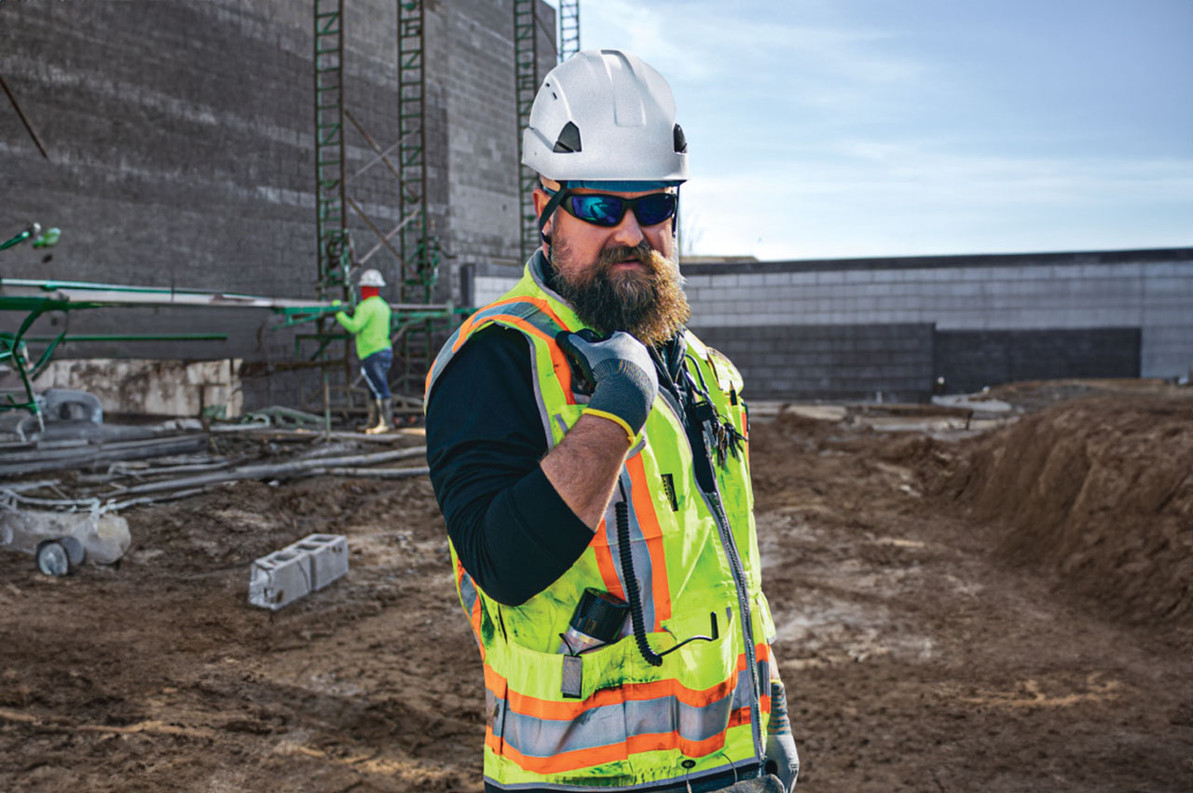Reflecting on Safety Colors
Analyzing the Color Science
The safety and visibility of employees operating in hazardous conditions are highly dependent on the scientific rationale behind the chosen high-visibility colors. Essential safety colors such as neon yellow, safety orange, and safety green offer maximum visibility across diverse work situations.
The vibrant nature of these hues sets them distinctively apart against the majority of backgrounds, especially within a natural landscape or under limited light, affirming their crucial role in safety equipment.
Fluorescent colors such as fluorescent orange and neon yellow are especially effective as they absorb and emit light, ensuring visibility during early mornings or late evenings when light conditions might be suboptimal.
The selection of these colors owes to their visibility spectrum, optimizing visibility so that workers are easily discernible to others and thereby reducing accident risks due to physical hazards.
Retro-Reflection in this Modern World of Safety
Incorporating reflective tape and fluorescent material, high visibility attire functions by seeming to produce a radiant glow when illuminated. This phenomenon, known as retro-reflection, operates through distinct silvered inks in the fabric, reflecting the light back towards its originating direction. The ultimate function of high-visibility attire is to enhance the wearer's visibility, thereby mitigating potential hazards.
The apparent light produced during the day enhances the visibility even more dramatically under dim light conditions or during nighttime, especially when a direct source of light, like car headlights, reflect off it. Given that the light emitted is contingent on striking a direct light source, reflective attire adds definition without causing a distraction.
Safety Standards to Know Before Choosing Garments
Safety standards are pivotal when choosing garments, particularly for jobs that come with an increased risk to personal safety. Among the important standards are those set by the American National Standards Institute (ANSI) - Class 2, Class 3, and Class E, Type O, R, and P.
ANSI Class 2 garments are designed for individuals who are in areas where traffic does not exceed 25 MPH, ensuring visibility to drivers. They are used in occupations such as road construction, utility workers, and school crossing guards.
On the other hand, ANSI Class 3 items are necessary for high-risk areas with traffic over 25 MPH. They provide increased visibility to prevent accidents, which is why they are used by emergency responders and road crew workers.
ANSI Class E standards pertain to supplementary safety garments like pants or gaiters. For optimal protection, they should be used in combination with either class 2 or class 3 garments.
Type O – (“Off-Road”) Occupational HVSA for Non-Roadway Use
 Environments which pose stuck-by hazards from moving vehicles, equipment and machinery, but will not include expose to traffic on public access highway rights-of-way or roadway temporary traffic control (TTC) zones.
Environments which pose stuck-by hazards from moving vehicles, equipment and machinery, but will not include expose to traffic on public access highway rights-of-way or roadway temporary traffic control (TTC) zones.
Type R – (“Roadway”) Occupational HVSA for Roadway UseEnvironments which include exposure to traffic (vehicles using the highway for purposes of travel) from public access highway rights-of-way, or roadway TTC zones or from work vehicles and construction equipment within a roadway TTC zone
Type P – (“Public Safety”) Occupational HVSA for Emergency and Incident Responders and Law Enforcement Personnel
Environments which include exposure to traffic from public access highway rights-of-way, or roadway TTC zones, or from work vehicles and construction equipment within a roadway TTC zone or from equipment and vehicles within the activity area.
How Can Safety Smart Gear Help?
Consideration of ANSI standards is crucial for safeguarding employees in high-risk occupations. They provide visual cues to others, ensuring safety on the job.
Safety Smart Gear can help your crew get outfitted with the optimal protective garments needed for the industry or job at hand. Be Seen, Be Safe, Be Smart and contact us today for additional information or big discounts on bulk orders. Call: (508) 248-3141
Recent Posts
-
Made In USA Safety Clothing
Benefits of Made in USA Safety Clothing Making Safe Choices with USA-Made Safety Clothing When …Apr 14th 2025 -
Protect Public Events From Hostile Vehicles
The escalating number of vehicle-ramming incidents, whether deliberate or unintended, has underscore …Mar 13th 2025 -
Insulating Gloves & Sleeves - ASTM F496-24 Changes
Rubber insulating gloves and sleeves are essential personal protective equipment for individuals per …Feb 28th 2025




